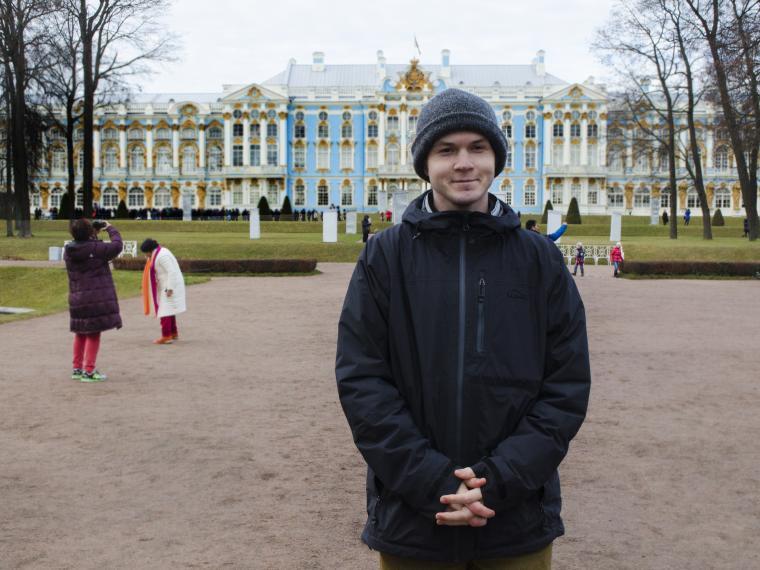Lyceum No. 239
Interning at the Presidential Physics and Mathematics Lyceum №239 in St. Petersburg

Drew Wise (OC ’15) wrote to us from St. Petersburg about his internship: "Since the end of September, I have been teaching English at a Mathematics and Physics Lyceum in the heart of Saint Petersburg. I work in a beautiful building that dates from the 18th century, and the history is breathtaking: The likes of Joseph Brodsky, Peter Fabergé, and Grigori Perelman have all passed through the halls of the so-called Annenschule. My responsibilities include leading class discussions, giving presentations, directing an English language club, and acting in an English-language theater group (though I am not terrifically theatrical by nature). This work, although interesting and rewarding, can often be quite difficult. [...] This is now my third trip to Russia, but I can say unequivocally that I have never been this close to actual Russian life before. Nor, for that matter, have I ever felt so decidedly American. With time I am becoming more comfortable, though, and I would highly recommend this school for future OCREECAS interns."
After successfully completing the internship, Drew reflected on the institution's significance: "I spent most of the 2015-16 school year as an intern teacher of English at school 239 in Saint Petersburg. The school—or lyceum, as they prefer to call it—is specialized in math and physics, with both subjects taught at an impressively high level. It is well known that Russians do not take their hard sciences lightly, and at 239 (as the school is affectionately known), all students take two years of rigorous calculus and coursework in optics and quantum physics. The school has an impressive list of alumni, including Grigori Perelman, who might be the most stereotypically brilliant and insane mathematician alive. [...] I saw a list of some of 239’s most successful alumni when I first arrived at the school. On my first day, my main supervisor, a sharp old English teacher named Sergei Petrovich, showed me around the school’s main building. Speaking perfect English, Sergei Petrovich pointed out a series of white plaques on the walls, each covered with names written in gold lettering. These, he explained, were students who had won academic prizes at the All-Russian, All-Union, and international levels—some of the country’s best and brightest."